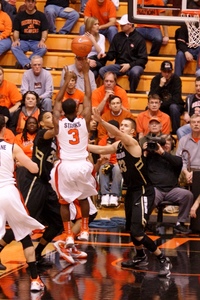Wrapping Up The Pac-12’s Summer Exhibition Tours
Posted by Connor Pelton on September 13th, 2012Seven Pac-12 schools took a foreign exhibition trip this summer. We recap them below with Drew taking UCLA, Utah, and Colorado, and Connor taking the rest.
Arizona
- Where: The Bahamas
- When: August 11-13
- What: The Wildcats swept their two games against Bahamian competition.
- Why: As Arizona transitions from an NIT one-and-done to having at least NCAA Third Round expectations, this trip was all about integrating instant-impact newcomers Kaleb Tarczewski, Grant Jerrett, Brandon Ashley, Gabe York, and Mark Lyons into the rotation. Setting lineups and seeing what groups of players meshed well together was much more important than the actual play against less than stellar competition.
- Who: Lyons and fellow senior Kevin Parrom were the stars of the trip, each averaging 18.5 PPG. The most anticipated freshman to don the cardinal red and navy blue in a while, Tarczewski, scored eight points in each game on the trip. Arizona absolutely destroyed their lowly competition, winning both games by a combined 112 points.
Colorado
- Where: France, Belgium and the Netherlands
- When: August 11-22
- What: The Buffaloes went 2-3 in five games against European professional teams.
- Why: With CU breaking in six scholarship freshmen, the trip gave head coach Tad Boyle a chance to build camaraderie between the talented new guys and their six returnees from last year’s Pac-12 championship team. The trip also gave the freshmen a chance to build an identity of their own, evidenced by the fact that Boyle sat out the core returnees from last year’s squad – Andre Roberson, Askia Booker, Spencer Dinwiddie and Sabatino Chen – in one of the games, allowing five of the freshmen to start the game together.
- Who: While Roberson was his usual magnificent self – he averaged 14.4 points and 13.8 rebounds – freshman Josh Scott eliminated any doubt that he could be an immediate impact player. Scott led the Buffs in scoring in four of the five games, coming up a point short of the leaders in the opening game; he averaged 17.4 point per game for the trip. His classmate Xavier Johnson also made a statement, averaging more than ten points to go with seven rebounds for the game.
















































